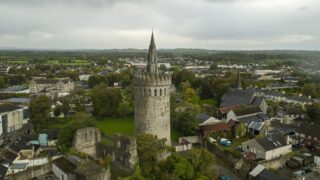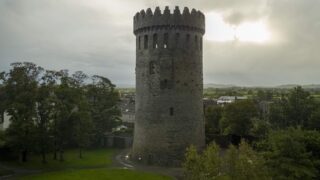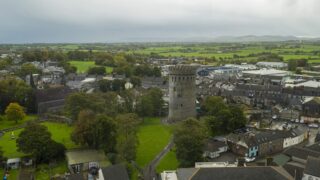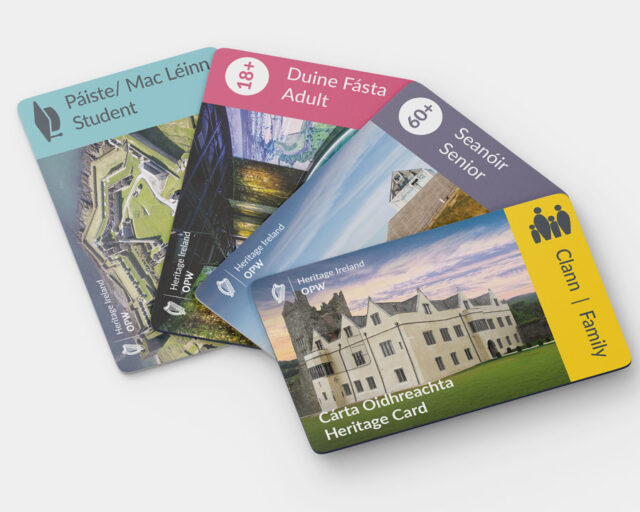Fógra
WARNING: It should be noted that these sites are unguided and a level of care and caution should be maintained during all stages of your visit. The Office Of Public Works (OPW) will not be held responsible for any damages, injuries, or losses that occur
Nenagh Castle
Nenagh Castle is a fine example of a Norman structure, dating between 1200 - 1220. Its construction marked the beginning of the creation of Nenagh town.
There are 101 steps in total to reach the top of the tower, and it is five storeys high. The second floor is believed to have once been the main public hall, while the third floor was the lord’s private residence. What stands today is the last remaining tower of three, which were surrounded by a curtain wall. There would have also been a two-towered gatehouse, and it was likely defended by a moat.
The castle changed hands multiple times throughout its history, initially acting as the main residence for Theobald Walter, and was the seat of his ancestors, the Butler family, until the mid-14th century. The Mac Ibrien family owned the building in the 15th century, and was returned to the Butler’s in 1533.
In 1760, a farmer placed gunpowder in the wall of the castle in an attempt to get rid of sparrows that were nesting there and destroying his crops. His gunpowder idea only succeeded in blowing a hole in the wall.
Visit Historic Environment Viewer for more information on Nenagh Castle
Protect our Past - Click here to read about the importance of protecting our country’s unique heritage sites
This national monument is protected in accordance with the National Monuments Acts 1930 to 2014
Gailearaí
Suíomhanna cóngarach
Caisleán agus Gairdíní Phort Omna
Breáthacht ón seachtú haois déag ar bhruacha Loch Deirgeirt
Timpeall 24.7 km ón
Caisleán agus Gairdíní Ros Cré, agus Teach Damer/ Muilte Dubha
Áit a léiríonn cumhacht mheánaoiseach agus galántacht ón ochtú haois déag
Timpeall 28.6 km ón
Carraig Phádraig
Ard-Rí shéadchomharthaí na hÉireann
Timpeall 43.6 km ón




